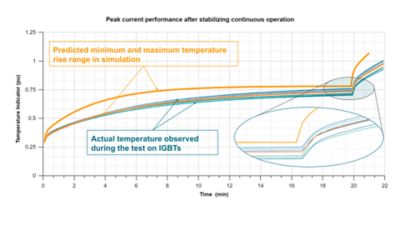Case Study
-
United States -
United Kingdom -
India -
France -
Deutschland -
Italia -
日本 -
대한민국 -
中国 -
台灣
-
Ansys s'engage à préparer les étudiants d'aujourd'hui à la réussite, en leur fournissant gratuitement un logiciel de simulation.
-
Ansys s'engage à préparer les étudiants d'aujourd'hui à la réussite, en leur fournissant gratuitement un logiciel de simulation.
-
Ansys s'engage à préparer les étudiants d'aujourd'hui à la réussite, en leur fournissant gratuitement un logiciel de simulation.
-
Contactez-nous -
Carrières -
Étudiants et universitaires -
-
S'inscrire -
Déconnexion -
Espace client -
Support -
Communautés partenaires -
Contacter le service commercial
Pour les États-Unis et le Canada
+1 844.462.6797
-
“Ansys simulation has helped us as a budding startup to develop highly efficient and cost-optimized drivetrain solutions in the e-mobility sector with its affordable startup package. In fact, we wouldn’t have ventured into prototyping a 60-kW air-cooled inverter unless we got simulation confirmation and good correlation confidence with Ansys Icepak software in prior projects. Further, we optimized the parasitics in the switching circuits with Ansys Q3D Extractor software. We were able to handle 400 Arms, even though the product planning target was only 220 Arms.”
— Riaz Ahamed N A, CEO, Nhanz Systems Private Limited
In electric vehicles, most systems delivering power of more than 40 kVA move to liquid cooling due to higher power dissipation. Because of this, drivetrain cost of a hatchback car or small commercial vehicle would increase by at least 60% with the addition of cooling infrastructure. To drive EV adoption in these vehicles, an air-cooled, low-cost solution is needed.
Challenges
In electronics component performance with respect to thermal dependency, efficiency and reliability are key challenges that must be addressed in the design workflow. The team’s main challenge was to ensure practical thermal performance of the controller up to an adverse ambient condition of 55 °C. The design also needed to ensure reliable short-duty peak operation while providing stable, continuous functionality. An additional but important challenge is keeping all paralleled components balanced and operating at same temperature, even in worst-case scenarios.

Engineering Solutions
To address these challenges, the team used Ansys simulations. Ansys Q3D Extractor software was used to compute the circuit parasitic. The model was used to optimize the inductance to ensure dynamic current sharing for parallel components. Ansys Icepak simulation software was used evaluate the thermal performance for defined ambient conditions.
Benefits
- Using simulation, predicted performance was achieved with the concept prototype itself.
- Paralleling optimization, which is almost impossible with empirical methods or by optimization during testing, was achieved with simulation.
- The team tested 60% more current with inductance optimization. However, as losses are higher and cannot be handled by air cooling, liquid cooling is required to meet thermal performance.
Découvrez ce qu'Ansys peut faire pour vous
Découvrez ce qu'Ansys peut faire pour vous
Contactez-nous aujourd'hui
Merci de nous avoir contacté !
Nous sommes à votre disposition pour répondre à toutes vos questions. Un membre de l'équipe commerciale Ansys vous contactera sous peu.











